Peder Moos Unique dining table, designed for the Villa Aubertin, Rosnæs, Nakskov Fjord 1952 Oak, maple. 72.7 x 379.8 x 98.6 cm (28 5/8 x 149 1/2 x 38 7/8 in.) Executed by cabinetmaker Peder Moos, Denmark.
Provenance Villa Aubertin, Rosnæs, Nakskov Fjord, Denmark, 1952 Literature Esbjørn Hiort Finn Juhl Furniture, Architecture, Applied Art, Copenhagen, 1990, illustrated pp. 100-101 Catalogue Essay The present lot was commissioned in 1952 by the lumber dealer M. Aubertin and his wife for their house designed by the architect Finn Juhl One of the few houses by Juhl, the ‘Villa Aubertin’ is located in Rosnæs, on the Nakskov Fjord. Although Mr and Mrs Aubertin had Juhl design all the fixtures and fittings, then dress the interior rooms with his furniture designs, which they much admired, it was the dining table, designed by the master cabinetmaker Peder Moos that was used for the dining room area. There was indeed a connection between the cabinetmaker and architect as Arne Karlsen writes: ‘Among his contemporaries, Finn Juhl felt a certain kinship only with Peder Moos, the joiner who made all his furniture himself and was consequently able to find precisely the pieces of wood that had such a dense and homogeneous fibre structure that he could permit himself to work with dimensions that were even more slender than any Finn Juhl dared dream of’ (Arne Karlsen Danish Furniture Design: in the 20th Century, Volume 2, Copenhagen, 2007, p. 111). The ‘Villa Aubertin’ was the perfect location for the work of both Moos and Juhl to simultaneously exist. Peder Moos attended Kaare Klint’s ‘Department of Furniture Design’ at the The Royal Danish Academy of Fine Arts from 1935-1938. It was here where he had trained as a joiner and continued as a master craftsman. The unconventional Peder Moos was an aesthete with a predilection for sleeping outside, and was considered by some the ‘enfant terrible’ of the ‘Cabinetmaker’s Guild’ exhibitions. His machinations, could include anything from unfinished furniture to amusing titles for his exhibits. Moos would eschew the use of nails and would repudiate the suggestion that his joints were decorative and he maintained that they only served as a functional purpose; furthermore he despised the use of polish and would achieve the resplendent surface finishes with the rubbing of wood shavings. Always an original contributor to the ‘Cabinetmaker’s Guild’ exhibitions, Moos would receive many favourable responses from the critics: ‘One marvels at the fact that it is possible to bring the art of furniture making to such a degree of perfection’ and ‘a man for whom the work itself is sacred and who considers the economic result to be an irrelevant banality’ (Grete Jalk ed., Dansk Møbelkunst gennem 40 aar, Volume 3: 1947-1956, Copenhagen, 1987, p. 24). The previous quote gives gravitas to the stories that Moos would only reveal the cost of the commission once the work had been completed. Read More
Peder Moos Unique dining table, designed for the Villa Aubertin, Rosnæs, Nakskov Fjord 1952 Oak, maple. 72.7 x 379.8 x 98.6 cm (28 5/8 x 149 1/2 x 38 7/8 in.) Executed by cabinetmaker Peder Moos, Denmark.
Provenance Villa Aubertin, Rosnæs, Nakskov Fjord, Denmark, 1952 Literature Esbjørn Hiort Finn Juhl Furniture, Architecture, Applied Art, Copenhagen, 1990, illustrated pp. 100-101 Catalogue Essay The present lot was commissioned in 1952 by the lumber dealer M. Aubertin and his wife for their house designed by the architect Finn Juhl One of the few houses by Juhl, the ‘Villa Aubertin’ is located in Rosnæs, on the Nakskov Fjord. Although Mr and Mrs Aubertin had Juhl design all the fixtures and fittings, then dress the interior rooms with his furniture designs, which they much admired, it was the dining table, designed by the master cabinetmaker Peder Moos that was used for the dining room area. There was indeed a connection between the cabinetmaker and architect as Arne Karlsen writes: ‘Among his contemporaries, Finn Juhl felt a certain kinship only with Peder Moos, the joiner who made all his furniture himself and was consequently able to find precisely the pieces of wood that had such a dense and homogeneous fibre structure that he could permit himself to work with dimensions that were even more slender than any Finn Juhl dared dream of’ (Arne Karlsen Danish Furniture Design: in the 20th Century, Volume 2, Copenhagen, 2007, p. 111). The ‘Villa Aubertin’ was the perfect location for the work of both Moos and Juhl to simultaneously exist. Peder Moos attended Kaare Klint’s ‘Department of Furniture Design’ at the The Royal Danish Academy of Fine Arts from 1935-1938. It was here where he had trained as a joiner and continued as a master craftsman. The unconventional Peder Moos was an aesthete with a predilection for sleeping outside, and was considered by some the ‘enfant terrible’ of the ‘Cabinetmaker’s Guild’ exhibitions. His machinations, could include anything from unfinished furniture to amusing titles for his exhibits. Moos would eschew the use of nails and would repudiate the suggestion that his joints were decorative and he maintained that they only served as a functional purpose; furthermore he despised the use of polish and would achieve the resplendent surface finishes with the rubbing of wood shavings. Always an original contributor to the ‘Cabinetmaker’s Guild’ exhibitions, Moos would receive many favourable responses from the critics: ‘One marvels at the fact that it is possible to bring the art of furniture making to such a degree of perfection’ and ‘a man for whom the work itself is sacred and who considers the economic result to be an irrelevant banality’ (Grete Jalk ed., Dansk Møbelkunst gennem 40 aar, Volume 3: 1947-1956, Copenhagen, 1987, p. 24). The previous quote gives gravitas to the stories that Moos would only reveal the cost of the commission once the work had been completed. Read More


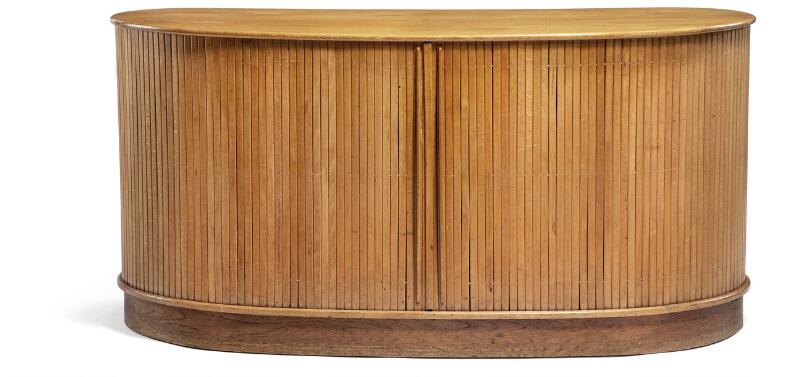

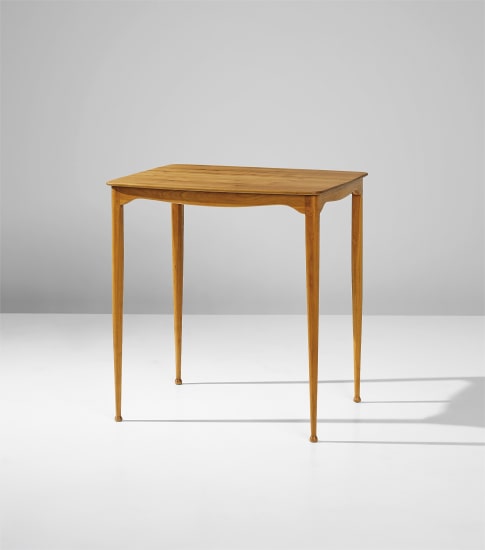



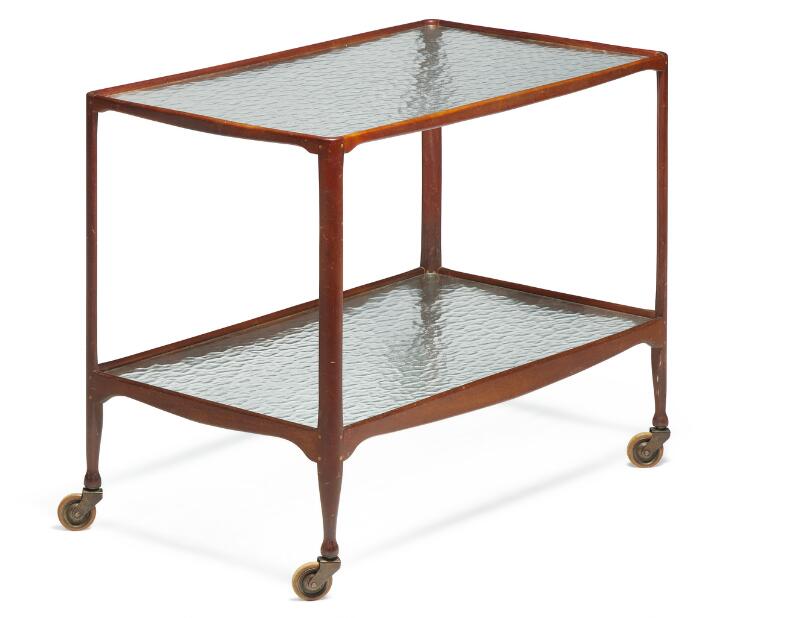


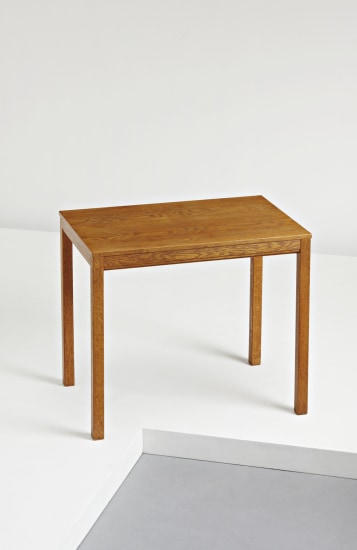
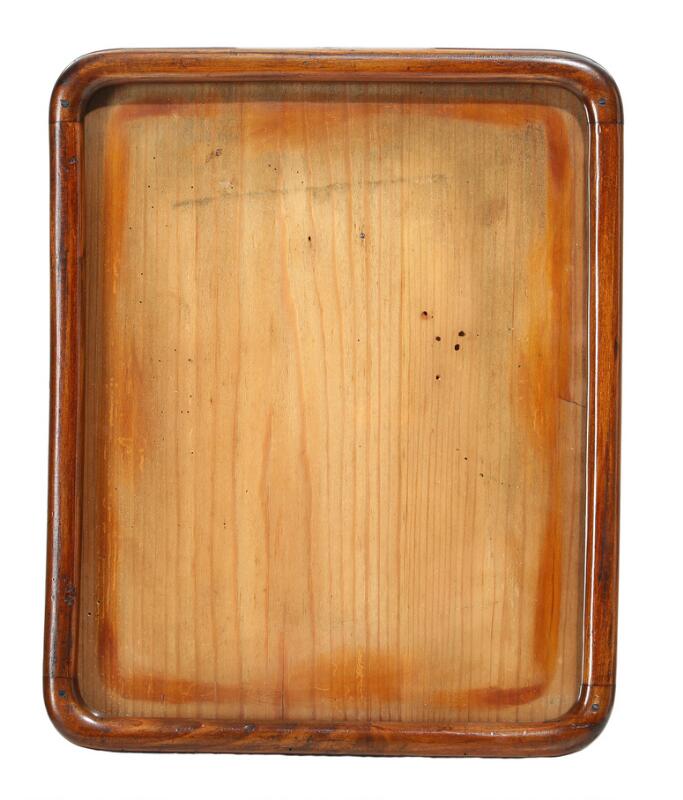
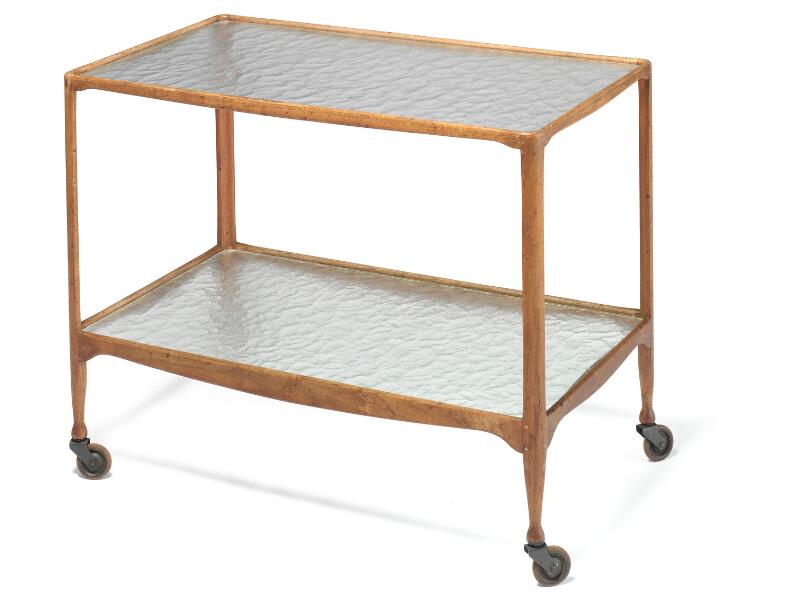
Try LotSearch and its premium features for 7 days - without any costs!
Be notified automatically about new items in upcoming auctions.
Create an alert